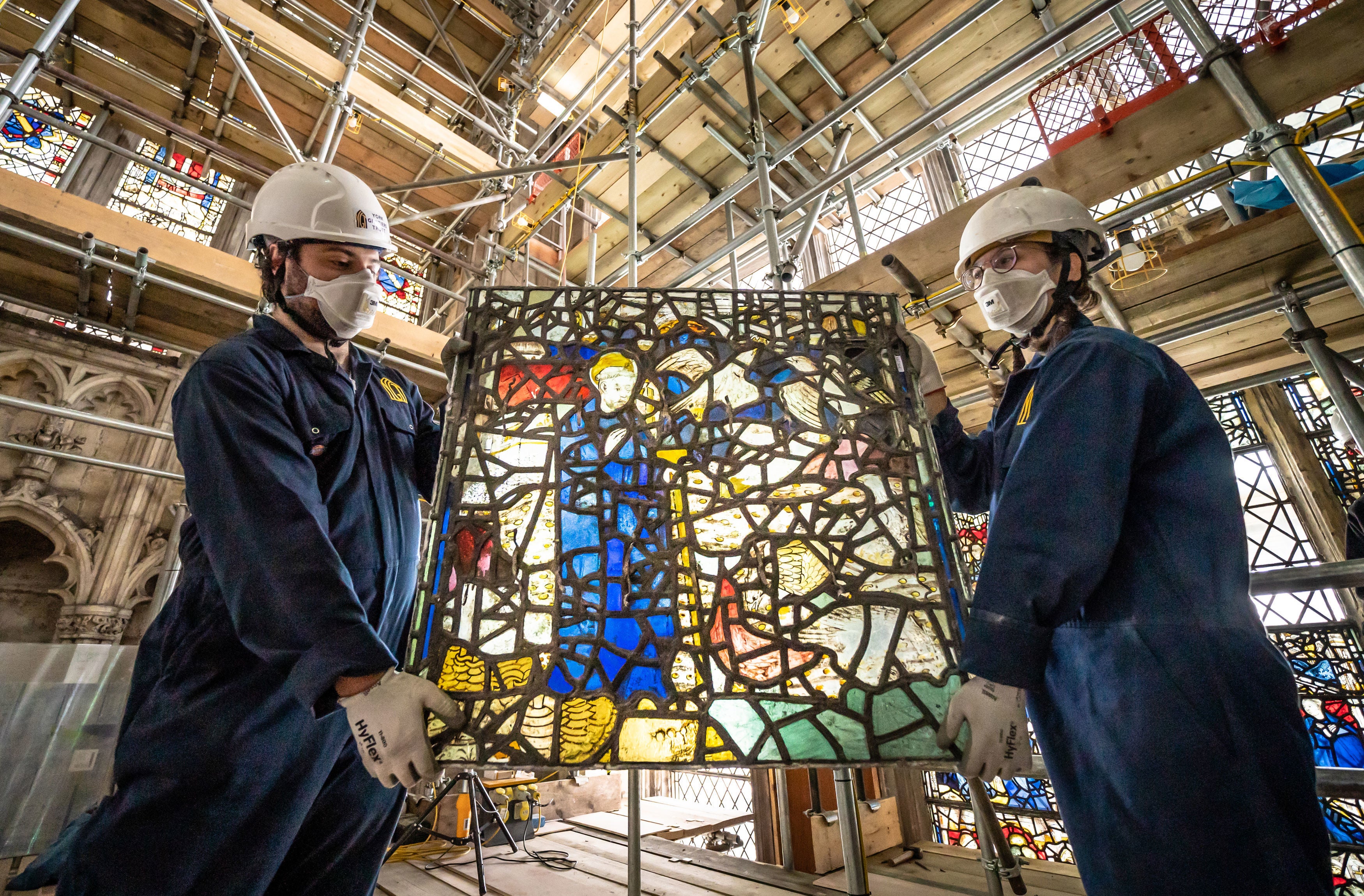Rowan LeCompte: Artist who taught himself a medieval craft and created windows that reflected both ancient and modern beliefs
Matt Schudel

At the age of 16, hoping to be an artist or architect, Rowan LeCompte approached the architect of Washington National Cathedral, Philip Hubert Frohman, with a design for a small chapel window. The design was approved on the spot, and LeCompte was paid $100. From that day, he devoted his life to stained glass, and to Washington National Cathedral in particular, designing more than 40 of its windows, including the west end rose window which the Washington Post hailed in 1976 as "one of the masterpieces of Christendom".
Rowan Keith LeCompte was born in Baltimore; his father was a baker, and early in his career, LeCompte fired glass designs in his oven. In the Army during the Second World War, he took part in the Normandy invasion and the liberation of Paris. There was no school at which to study a medieval art, so LeCompte learned alone, with occasional tutorials from other masters. Stained glass may have been an ancient art, but he was not simply trying to recreate a lost art, he said, and saw his windows as an expression of his time. As early as 1955, he wanted to have stained glass "assert itself as a great modern art". In one window he included small images of ballistic missiles as a protest against military proliferation. And in a depiction of the childhood of Jesus, he modelled the face of Joseph on his own.
LeCompte aimed for three qualities in every window: clarity, richness and sparkle. His first wife, Irene Matz, helped with some of his designs before her death in 1970.
When in 1972, he received the commission for the Washington rose window, he chose an abstract design, using coloured glass to refract light in all the hues of the spectrum. It took more than three years to complete the project. The cathedral's glass fabricator, Dieter Goldkuhle, who died in 2011, inserted more than 10,500 pieces of coloured glass in the window, which is 26 feet in diameter.
In 1990, construction of the cathedral was finally completed, after 83 years. But LeCompte kept going, creating new windows and replacing others. He designed his final window, yet to be installed, about four years ago. He seldom spoke of beliefs, except to say, "I believe in kindness and love, and there are those who say that those are God."
He recalled that when his rose window was unveiled, a young girl danced in the coloured light that poured onto the floor within the cathedral. When asked what she was doing, she said, "I'm dancing because I found the end of the rainbow."
© The Washington Post
Rowan LeCompte, stained glass designer: born Baltimore 17 March 1925; married Irene Matz (deceased); Peggy Money; died Waynesboro, Virginia 11 February 2014.
Subscribe to Independent Premium to bookmark this article
Want to bookmark your favourite articles and stories to read or reference later? Start your Independent Premium subscription today.

Join our commenting forum
Join thought-provoking conversations, follow other Independent readers and see their replies